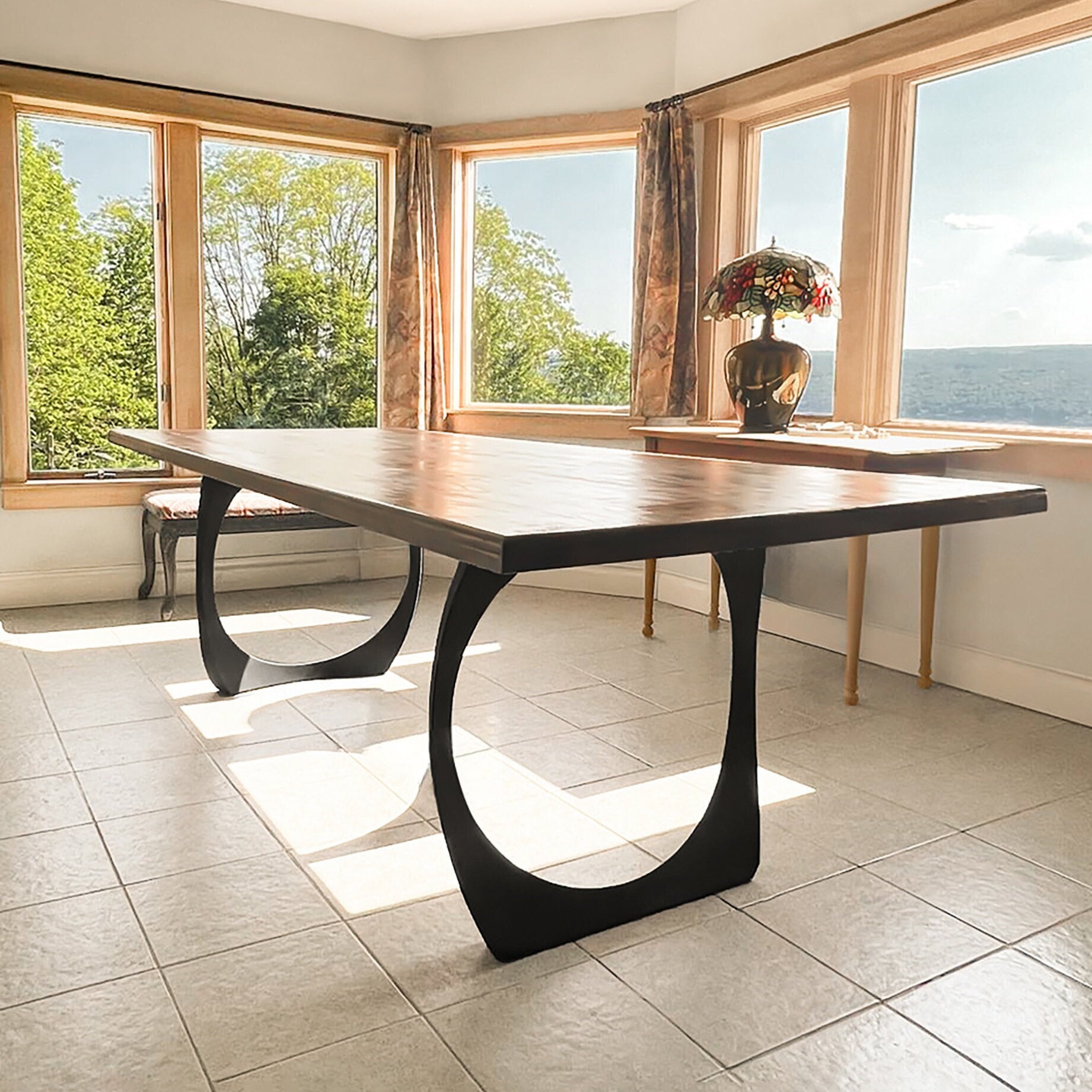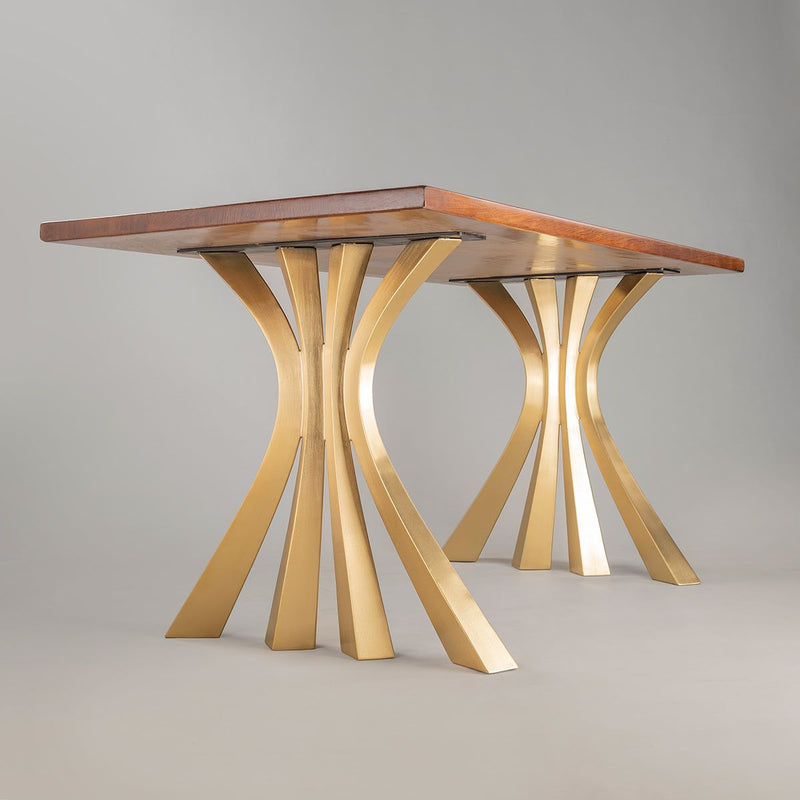Checking Out Various Styles for Dining Room Table Legs to Suit Your Aesthetic
Checking Out Various Styles for Dining Room Table Legs to Suit Your Aesthetic
Blog Article
A Detailed Take A Look At Table Leg Styles: Finding the Perfect Match
Selecting the ideal table leg style is vital for both aesthetic charm and practical functionality. Standard four legs provide classic elegance and security, while the stand base provides boosted legroom and a modern appearance. For those with larger tables, trestle legs make sure durable assistance, whereas barrette legs introduce a mid-century modern vibe with their minimal design. The x-shaped legs mix contemporary design with enhanced stability. Each of these options brings unique advantages, making the choice much more than just a matter of preference. Discover better to discover which design perfectly complements your eating area and lifestyle.
Traditional Four Legs
Amongst the various kinds of eating table leg styles, the traditional four-leg design continues to be a classic choice for many homes. 4 legs supply balanced assistance, ensuring the table stays stable and qualified of birthing significant weight (dining room table legs).
From an aesthetic viewpoint, the traditional four-leg design can be easily adapted to various interior designs. Whether crafted from wood, metal, or a combination of products, these legs can be delicately carved, smooth and minimalistic, or anything in between. Their convenience permits them to match both rustic and contemporary settings seamlessly.
Additionally, the straightforward structure of the four-leg layout assists in ease of activity and positioning within a space. Unlike even more complex bases, this design minimizes obstructions, providing enough legroom for restaurants. In recap, the typical four-leg table leg design marries sustaining elegance with useful capability, making it a sharp selection for those seeking both form and function in their dining furniture.
Pedestal Base
Typically celebrated for its stylish and space-efficient design, the pedestal base is a recognized alternative to the traditional four-leg arrangement in table leg styles. This unique base commonly includes a single central column sustaining the tabletop, which can differ in form, from ornately carved wood to sleek, modern-day steel. One of the primary benefits of the stand base is its capacity to optimize legroom and seating flexibility. Without corner legs, diners are managed higher freedom of motion, making it a perfect option for round and oblong tables that advertise more intimate and inclusive gatherings.
The main column itself provides a canvas for elaborate styles and imaginative expressions, adding an aspect of aesthetic passion underneath the table. In summary, the stand base integrates performance with design, making it an improved and practical alternative for varied dining atmospheres.
Trestle Legs
Trestle legs offer a robust and ageless structure for eating tables, defined by their horizontal cross-bracing and durable assistance beam of lights. Stemming from middle ages times, this layout has evolved see here now yet kept its essential framework, making it a seasonal favorite in both traditional and contemporary settings. The main trestle light beam, usually sustained by two or more upright posts, uses outstanding stability, enabling for larger table lengths without the requirement for added legs.
A substantial advantage of trestle leg tables is the enough legroom they supply. Unlike tables with 4 corner legs, the absence of obstructions at the table's sides offers unblocked room for chairs and restaurants, boosting comfort and availability. This makes trestle tables ideal for accommodating bigger events, whether in an eating area or a banquet hall.
From rustic farmhouse to streamlined modern designs, trestle legs can be tailored to fit private tastes. Their enduring appeal and useful benefits make trestle legs an engaging selection for those looking for both style and practicality in their dining table.
Barrette Legs

The allure of barrette legs depends on their simpleness and adaptability - dining room table legs. Available in a variety of materials, including steel and brass, they can be finished in many shades to enhance different interior styles. Whether matched with a rustic wood table top or a contemporary glass surface, barrette legs effortlessly mix capability with a touch of vintage charm
Resilience is one more notable function of hairpin legs. In spite of their fragile appearance, these legs are crafted to birth significant weight, guaranteeing the table continues to be steady and safe. Furthermore, they are reasonably easy to mount, making them a popular choice for do it yourself fanatics and specialist furnishings makers alike.
X-Shaped Legs

Constructed from materials such as steel, timber, or a combination of both, X-shaped legs can be customized to match different style browse around these guys choices. Steel legs typically offer a smooth and industrial feeling, perfect for loft-style houses and modern-day eating spaces. On the other hand, wooden X-shaped legs use a warmer, a lot more rustic allure, use this link appropriate for farmhouse or eclectic insides. The adaptability in products permits house owners to personalize their table to much better fit their general style scheme.
In addition, the engineering behind X-shaped legs ensures also weight distribution, minimizing the threat of tottering and boosting sturdiness. This makes them specifically well-suited for bigger table that call for added support. Fundamentally, X-shaped legs blend practical design with modern aesthetics, making them a classic option for varied eating settings.
Verdict
An extensive understanding of dining table leg styles exposes the distinctive qualities and advantages of each layout. Trestle legs make sure robust support for bigger tables, and barrette legs introduce a mid-century contemporary aesthetic.
Report this page